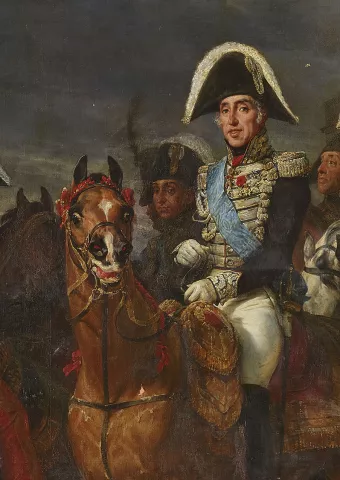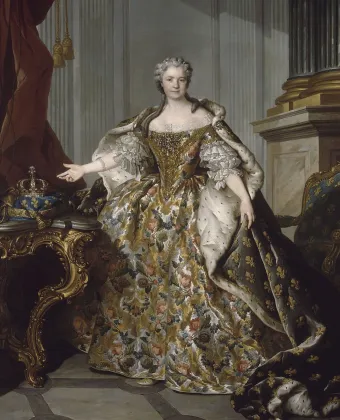The Count of Artois and future Charles X was the third oldest brother of Louis XVI and the troublemaker of the royal family. In 1773 he married Maria Theresa of Savoy,then left France in July 1789 at the first signs of the Revolution, only returning in 1814. While abroad he re-joined his brother, Louis Stanislas Xavier, the Count of Provence, in 1791 and remained by his side before going back to France in 1814 under the title of Lieutenant-General of the Kingdom to prepare the former’s return as Louis XVIII.
He succeeded his brother to the French throne in turn after the former’s death in 1824, becoming Charles X and a strict upholder of the Catholic party. He was crowned in Reims the following year.

The entry of King Charles X into Paris upon his return from Reims where he was crowned
© RMN-Grand Palais (Château de Versailles) / Gérard Blot
This spectacular but somewhat outmoded ceremony, fifty years after the coronation of Louis XVI, generated surprise among popular opinion and represented a backward step that was difficult to accept. Charles X was overthrown by the July Revolution in 1830, known as “Trois Glorieuses”, and left for exile to England, Scotland, Prague and finally Istria, where he died in 1836.
When he was young, the Count of Artois shared a large double apartment with his wife on the first floor of the South Wing. After becoming Charles X, he had no major plans for the Palace, which he simply maintained. When he left for Saint-Cloud during the revolution in 1830, in the early morning of 31st July, he avoided Versailles after warnings from the governor of the town made him fear the hostility of the population, stopping instead for a few hours in the Grand Trianon before travelling on to Rambouillet then taking the road to exile.











